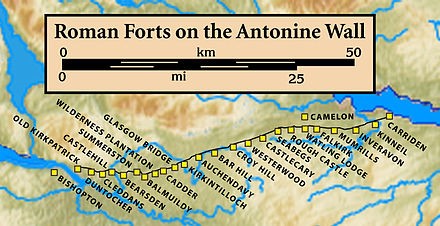Recent research has shown that communities who lived on the Antonine Wall (either in the wall’s forts or in annexes next to the forts) were not just comprised of Roman soldiers. Women and children of all levels of society were present at many sites along the wall. Detecting their presence, however, is difficult, as documentary evidence such as altar dedications to gods and goddesses do not often mention them, and items such as shoes and pottery from this time are often not preserved. A full spectrum of female experience was therefore lived at the Antonine Wall; here is one woman’s story…
Background
This story is based on a real-life woman, slave of Second Legion Centurion Marcus Cocceius Firmus, who was based at the Antonine Wall fort Auchendavy. Drawing on evidence of other women from the time, this story was created to highlight how Roman society’s attitude towards women at this time might have affected an individual.
Higher-class women did have status and some political freedom, at times they were encouraged to speak in public. Life for slave girls and women, however, and indeed slave boys and men, was completely the opposite – all agency was removed from them.
I chose to highlight this story not to criticise Roman society (society today clearly does not condone slavery) but to highlight the bias of the historical record: what our ancestors have left behind may not tell the full story of their time period. There is very scant evidence of women and the lower classes from the period because they did not feature as prominently in public life, for example as soldiers or politicians, but this does not mean that they were not there. It was not considered important to record the lives of women or the lower classes unless their lives were somehow caught up in a public exchange (as in the case of the slave girl in the video).
This story shows that Roman imperial outposts consisted not only of soldiers, but women, children, and of full households, representing a broad spectrum of society. It shows that shifting our focus from the public and the obvious to the domestic and the hidden can give us a much richer picture of Roman life and a better understanding of how society worked on the Antonine Wall in Falkirk, and perhaps across the Roman Empire.
By Victoria Mitchell, Hidden Heritage Online: Ancient Falkirk volunteer and Great Place Digital Heritage Placement.
With thanks to Sabine Hellmann, Geoff Bailey and Tatjana Sandon for their assistance.

